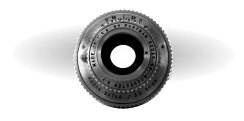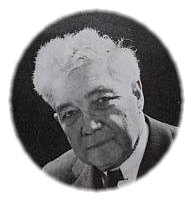|
Willy E.
Schade (1889-1973)
was born in Braunschweig, Germany and got his first experience in optics
in with Voigtländer. He was in the German army during WWI and was
wounded. After the war he worked at Goerz in Berlin, but lost his position
in the mergers of several small optical companies with Zeiss in 1926.
He emigrated to the U. S. and took a position as lens designer with Ilex
in Rochester. In 1932 he accepted a position in the Kodak Optics department,
where he designed many of their best lenses. He retired in 1958 and returned
to Braunschweig to spend his remaining years.
Kingslake described
him as: "An old-fashioned designer (who) remained faithful to the
book of six figure logarithms until his retirement, although he had no
objection to his assistants using any computing aids they desired. He
used to wear out a copy of Bremiker's logarithms every year!"
|

